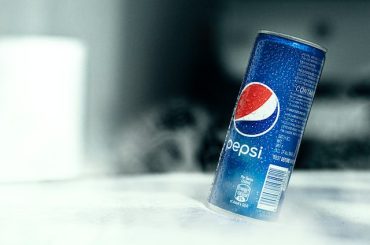Before we dive deep into the Marketing Mix (4Ps), let’s get the business overview of Colgate-Palmolive. Colgate-Palmolive Company is a multinational consumer products corporation specializing in producing, distributing, and selling various household, healthcare, and personal care products.
The company was founded in 1806 by William Colgate as a soap and candle business in New York City. Over the years, it has expanded its product offerings and geographical presence, becoming one of the leading global brands in the consumer products sector.
The company operates through two main segments:
- Oral, Personal, and Home Care: Colgate-Palmolive is best known for its oral care products, including toothpaste, toothbrushes, mouthwash, and dental floss, under the brand name “Colgate.” In addition to oral care, the company also manufactures personal care products like soaps, shower gels, and deodorants under various brand names, such as Palmolive, Irish Spring, and Sanex. The home care product line includes detergents, fabric conditioners, and dishwashing liquids under brands like Ajax, Fabuloso, and Soupline.
- Pet Nutrition: Colgate-Palmolive’s pet nutrition division, primarily under the “Hill’s Science Diet” and “Hill’s Prescription Diet” brands, provides high-quality pet food for cats and dogs. These products cater to the specific nutritional needs and health conditions of pets, emphasizing the importance of scientific research in creating products that promote pet health and well-being.
Colgate-Palmolive operates in more than 200 countries and territories worldwide, with manufacturing facilities spread across the globe. The company’s products are marketed through direct sales, distributors, retailers, and e-commerce channels.
Financial Performance 2023: Financially, Colgate-Palmolive has a robust balance sheet and has consistently delivered revenue growth and profitability. Worldwide Net sales were $19,457 Mn in 2023, up 8.5% from 2022, and Operating profit increased 38% to $3,984 Mn in 2023 from $2,893 Mn in 2022.
Here is the Marketing Mix (4Ps) for Colgate-Palmolive
A marketing mix, also known as the 4Ps of marketing, is framework marketers use to develop and implement effective marketing strategies. The concept helps businesses identify and optimize the key components necessary to promote and sell their products or services. The 4Ps of the marketing mix are Product, Price, Place, and Promotion.
In addition to the traditional 4 Ps, marketers have expanded their strategies by incorporating additional elements (People, Process & Performance) to help them better understand and reach their target audiences. But we will focus on the 4Ps as they still are the foundation of any marketing strategy. In this article, we will understand the marketing mix (4Ps) of Colgate-Palmolive.
What is a Marketing Mix? What are the 4Ps of Marketing?
Product
- Product Categories: Colgate offers a diverse range of oral care products, which can be broadly divided into the following categories:
- Toothpaste: Colgate provides multiple toothpaste options, targeting different segments of consumers. These include products for cavity protection, whitening, sensitivity relief, gum health, tartar control, enamel strengthening, and natural ingredients-based options.
- Toothbrushes: Colgate offers a variety of toothbrushes, such as manual, battery-powered, and electric toothbrushes, designed for different age groups and oral care needs.
- Mouthwash: Colgate’s mouthwashes cater to various oral care concerns like bad breath, gum problems, and teeth whitening.
- Dental Floss: Colgate offers dental floss and interdental products to promote better oral hygiene and gum health.
- Products for Kids: Colgate has a range of toothpaste and toothbrushes designed explicitly for children, with flavors and characters that appeal to them.
- Packaging: Colgate is known for its distinctive and recognizable packaging, often featuring its iconic red logo and white background. The packaging is designed to be visually appealing, informative, and functional. It includes different sizes and forms to cater to various consumer preferences, such as tubes, pumps, stand-up bottles for toothpaste, and bristle types and handle designs for toothbrushes.
- Innovation: Colgate consistently invests in research and development to create new and improved products. The company aims to cater to emerging consumer trends and needs, such as the growing demand for natural and eco-friendly oral care products. Colgate has introduced several innovative products, including toothpaste with advanced whitening or sensitivity protection technology, smart electric toothbrushes with real-time feedback, and recyclable toothpaste tubes.
Price
- Competitive Pricing: Colgate operates in a highly competitive market, facing competition from other major oral care brands and local and regional players. Therefore, Colgate sets prices for its products that are competitive and in line with the offerings of rival brands to ensure it remains an attractive choice for consumers.
- Price Segmentation: Colgate offers a wide range of products at different price points to cater to its customers’ diverse needs and budgets. This pricing strategy allows the brand to target different consumer segments, such as those looking for affordable oral care products and those seeking premium or specialized products.
- Value for Money: Colgate aims to provide good value for money to its customers by offering high-quality products at reasonable prices. This strategy helps the brand to maintain customer loyalty and attract price-conscious consumers.
- Promotional Pricing: Colgate occasionally employs promotional pricing strategies, such as discounts, offers, and bundled deals, to boost sales and attract new customers. These promotional activities can help clear excess inventory, drive short-term sales growth, and increase market share.
- Geographic Pricing: Colgate considers geographic factors when setting prices for its products, considering the economic conditions, purchasing power, and local competition in different regions. This approach ensures that Colgate’s products are priced appropriately for other markets worldwide.
Colgate-Palmolive SWOT Analysis
Place
- Extensive Distribution Network: Colgate has a vast and efficient distribution network that spans numerous countries. This network enables the company to reach a large consumer base and maintain a strong global presence.
- Channel Strategy: Colgate employs a multi-channel distribution strategy that includes various channels, such as supermarkets, hypermarkets, convenience stores, pharmacies, discount stores, and online retailers. By making its products available through a wide range of channels, Colgate ensures that consumers can easily find and purchase them.
- E-commerce: Colgate has embraced the growth of e-commerce and made its products available through various online platforms, including its website and other leading e-commerce websites. This approach allows the brand to cater to the increasing number of consumers who prefer online shopping and expands its reach to customers in remote locations.
- Rural Market Penetration: Colgate has focused on penetrating rural markets, particularly in developing countries, by tailoring its distribution strategy to cater to the unique challenges in these areas. This includes using smaller pack sizes, affordable pricing, and working with local distributors to ensure its products are available even in remote locations.
- Supply Chain Management: Colgate strongly emphasizes efficient supply chain management to minimize costs, maintain product availability, and respond to market demands quickly. The company invests in technology and collaborates with suppliers and logistics providers to optimize its supply chain operations.
Promotion
- Advertising: Colgate invests heavily in advertising across multiple channels, including television, radio, print media, billboards, and digital platforms. These advertisements focus on the benefits of Colgate’s products, such as cavity protection, whitening, and gum health, while promoting the brand’s commitment to oral hygiene and overall well-being.
- Digital Marketing: Colgate leverages digital marketing to reach and engage consumers online. The brand uses various digital channels, such as social media, search engines, content, and influencer marketing, to create brand awareness, share oral care tips, and promote its products.
- Sales Promotions: Colgate occasionally offers discounts, coupons, and bundled deals, to stimulate consumer interest and encourage trial purchases. These promotions can help the brand attract new customers, retain existing ones, and increase short-term sales.
- Public Relations (PR): Colgate engages in public relations activities to maintain a brand image and generate positive media coverage. The company participates in events, sponsorships, and partnerships and often highlights its corporate social responsibility (CSR) initiatives, such as oral health education programs and environmental sustainability efforts.
- In-store Promotions: Colgate uses in-store promotions, such as eye-catching product displays, shelf positioning, and point-of-sale materials, to attract consumer attention and encourage impulse purchases. These tactics can help the brand stand out in a highly competitive retail environment.
- Trade Promotions: Colgate works with retailers, wholesalers, and distributors to offer trade promotions, such as volume discounts, allowances, and merchandising support. These incentives help to motivate channel partners to stock and promote Colgate products, ensuring better product visibility and availability.











